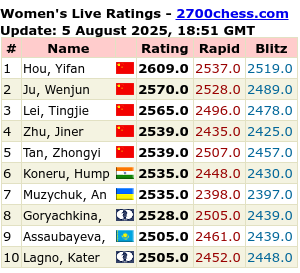I thought it best not to post another Arabian or Anastasia's mate, despite being in total thrall to the simplicity and beauty of both of them.
Instead, a couple of combinations from rapid games.
The first arises from the Centre Game, of which there are already a few examples on my blog.
I started using it after reading an article, ,on the excellent chessvibes.com site some few years ago. It was written by Arne Moll who is, along with the editor, Peter Doggers, an entertaining and educational writer.
( As a diversion, chessvibes.com was was sold to chess.com an few years ago and used to be available regurgitating chess.com articles, but when I tried today, there was no response. A short investigation reveals the site has gone, and is now a twitter account with a re-born life as the news-piece of chess.com. Since I'm not a twitter consumer, this explains why I didn't know of it. In its push for web-chess domination, chess.com has also bought the Komodo chess engine, which is an intriguing development for a web-site !)
Returning to the Centre Game, the article in question used the Russian GM Ian Nepomniachtchi as a high-profile exponent of the opening in its modern form, with a rapid game against Aronian presented as the guide.
As an enthusiastic novice the Centre Game seemed a great way to 'get your own opening', since after 1.e4 e5 2.d4, the invariable response is 2...exd4, and Qxd4 puts you firmly in "your" opening :perfect , it must be a win !
Of course, nothing is so simple, since, quite naturally, Black doesn't want to play along with you.
However, this gives it a psychological advantage in blitz, as, in my opinion, Black wants to show it isn't good, plus he wants to avoid white's preparation, and, as the Centre Game involves Queen-side castling as well, that is another beacon pulling Black to over-reacting !
Below is the position I reached after a king-side pawn advance ( a typical plan and as always its rarely pleasant for your opponent to see a shieldwall of pawns advancing towards you).
In this particular game,Black has also been lax in his weak defence, avoiding exchanges and blocks, retreating his king and ending up in a corner.
Intuition just screams that there is a great combination here, and a minute's calculation convinces me, that victory is in sight.
How would you proceed...
 |
| 19...Kh8. White to play and win |
A different game and another combination, in this case not forced, but a nice example of showing how not only how an idea can be re-cycled, but also how one wrong move turns a level game into a winning one.
When I played Rb8, expecting Qe2 as a response, I had seen a promising sequence ( Nxc5, followed by Bc5+ and an exchange of Rooks ), but instead a very strong, maybe even winning response of Bf4 was played !
 |
| 18. Bf4 ! |
This allowed me to free my Rook with 18...Rbd8, and after 19. Qd3 ( below )...
 | |
| 19. Qd3 |
 |
| 20...Bxc5+ |
White responded with the bad move of Kf1, instead of Kh1. I assume he was looking at the loose pawn on the a-file, should the King-side Rook recapture after the exchange on e1. This isn't the losing move but it surely encourages it.
 |
| 22. Kxe1 ?? |
A game-winning pin, especially when combined with the winning pawn move of d4 !

